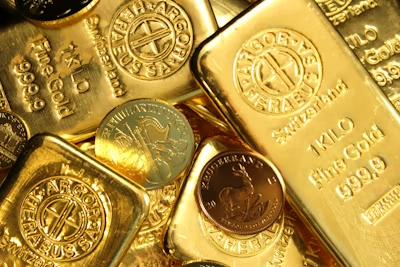
Global markets are currently facing a confluence of political and economic questions that have riddled olden empires, where the meteoric rise of the gold price signals empire change, now breaking the $4,000-per-ounce barrier, doubling its price in less than 2 years. Through safe-haven demand, gold noted a 53% year-to-date, building on a strong 27% rally in 2024, with gold ETFs attracting $64 billion in inflows globally, much of it in September. Investors are fleeing equities and bonds with fears that the super blown-out AI bubble might pop anytime to compound with geopolitical tensions and government shutdowns. The political chaos in France, where the fifth prime minister in under two years resigned, and the risk of Japan’s fiscal shift under newly elected leader Sanae Takaichi have further turned heads toward gold as a hedge.
The U.S. shutdown specifically has created a vacuum in official data, pushing investors toward private indicators like slowing job growth, which furthered the 25-basis-point Fed cut bet in October and another in December. Meanwhile, France’s political instability has spiked risk premiums on government bonds, while Japan’s potential fiscal “dovish” turn, prioritising spending over rate hikes, has fuelled yen weakness, reinforcing gold’s role as a hedge against fiat currency volatility. Analysts also highlighted the “fear of missing out” (FOMO) phenomenon, with central banks and retail investors alike piling into gold ETFs. Even other precious metals like silver, platinum, and palladium hit multi-year highs, though industrial metals like copper pulled back with supply issues. As Goldman Sachs and UBS upgraded their 2026 price targets, the narrative has solidified that gold’s ascent is not a fleeting trend but a structural shift driven by unsustainable debt, dollar weakness, and global fragmentation.
The current gold rally represents a coordination failure among global policymakers and investors to maintain fiat trust and value. The U.S. government shutdown, France’s political gridlock, and Japan’s fiscal gamble create circumstances where all related parties rationally choose gold as a safe haven, even as the odds of a geopolitical truce or Fed pivot remain uncertain. Investors, anticipating a “soft landing” scenario, are locked into a self-reinforcing cycle: the Fed’s rate cut expectations lower opportunity costs for holding non-yielding gold, while political chaos erodes trust in traditional assets. Gold price is expected to breach $5,000 by mid-2025 with continued Fed dovishness and the inevitability of reserve diversification by central banks. However, this trajectory hinges on a single trigger: if the U.S. economy proves resilient enough to delay rate cuts or if a breakthrough in Ukraine/Middle East conflicts reduces volatility, gold could face a sharp correction from over-subscription. For now, the market’s collective fear ensures gold remains the ultimate refuge until the global system resets.
Sources: Reuters, Investing, Kitco
Photos: Unsplash
